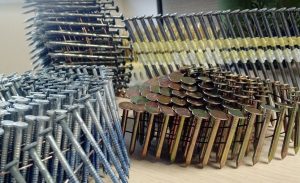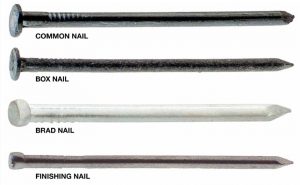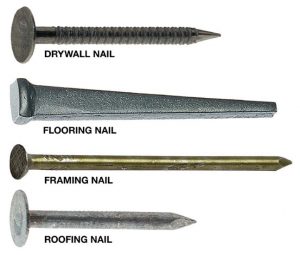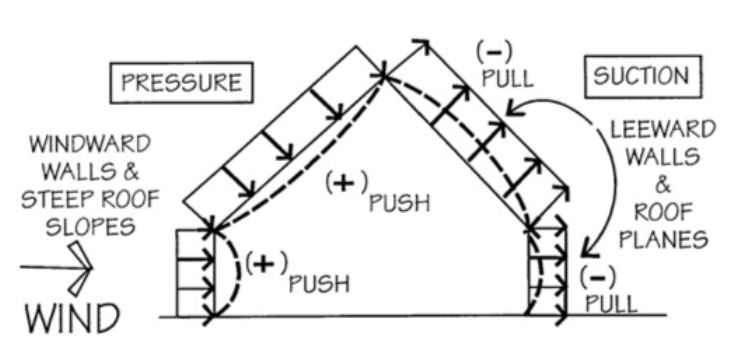26 Dec September 2022: Fasteners

Number 103
September 2022

Genie (Willis & Debby’s oldest daughter) is growing flowers. Her sunflowers are over 6 feet tall. One of the chicken coops is on the left edge of the photo.

From the Desk of Bill
Now that 76 candles are coming up on my birthday cake in a couple of months, I find myself spending more time thinking about lessons I have learned (and should have learned). Since there is no backspace or “undo” key on life, it is important we get as much right as we can on this one pass through on Earth.
Back when I was in high school, I bought a book named something like “What Every Young Man Should Know”. It was about common manners, how to dress, how to behave and subjects like that. When my dad saw the book, he commented I should just ask him. “Ask him what?” I wondered. It was a case when I did not know what I did not know. Interestingly, that seems to be a bit more common than one might think. He also commented that he wished he were my age (about 17) and still knew what he had learned.
I think about those two comments a good bit, particularly the last one. I suppose I am in his shoes now and have learned a good bit about life – not because I am particularly smart, but because I have made a lot of mistakes and we, sadly, learn more from our mistakes than our successes.
Over the years, I have pondered how I could transfer some of the knowledge I have learned to my descendants. That seems to me to be the real legacy we (should) leave our children and grands. Leaving material things does not work out very often, but sharing experiences, building bonds, giving loving guidance and simply caring appears to be a much better way to help those coming behind you.
Although I stop what I am doing and talk/listen to the younger ones when they want, I suspect they are plagued with the same issue I had: I don’t know what I don’t know. On one of our anniversary trips (more on those later) I made a decision to start writing the grandchildren who could (were old enough) to read. That was about 2000 or so. For a few years, I hand wrote the letters and then switched to the computer. Today, I am closing in on 9,000 weekly letters on my computer and writing 23 grandchildren. I don’t get letters written every week, but that is my goal.
What do I write? Everything. So far it is about 1,700 subjects: heroes of the past, military equipment, cars, airplanes, manners, how to dress, hobbies that might interest them, how things work, books I have read, trips I have taken, things I have seen and such. Hopefully, the letters might, at least in a small way get the grands thinking about things they might not have considered.
I think the frequent contact is as important as the letter content might be. Receiving a (usually) weekly letter from your grandfather may make a difference in someone’s life. I, personally, never got a letter from either of my grandfathers. I know some people don’t enjoy writing, but today, there are many options for keeping in touch: phone, email, text and visits. There are a lot of other people out in the world trying to influence your children and grandchildren and some of them don’t have the best of motives. As a dad and granddad, I want to make sure I get to add my two cents to the messages reaching those I love.
Another thing we have done is take several grandchildren on a trip to visit western sights: Yellowstone, Grand Canyon and many other beautiful locations. This June, we took the 12th grandchild. Not all of the grandchildren are able to go with working, school and other restrictions, but we intend to keep doing this as long as we are able.
Although I suppose connecting is not a “lesson learned”, it is an activity I undertook to try to head off problems. Another thing I have worked hard to do is drop everything and listen when someone wants to talk. When someone wants to talk, they are open and receptive. If you just grab someone by the lapels, you are probably not going to get through very well. I’ve tried that.
Along the connecting line, I have worked hard to make sure Kandy (my wife) and I have some time together at least on an annual basis. Of course, we talk at home and when we are shopping or eating out, but annually, we try to get away for a few days. We do this near our anniversary, so we call these trips our anniversary trips. This September (our anniversary) month, we are going to spend a few days in the northwest part of the state. During lean years, our “trip” was little more than a day or two somewhere or a picnic in a nearby park, but we got away from the distractions of home to connect.
Another lesson I have learned is to use my BS filters. In electronic circuit design there are circuits called filters that either filter out unwanted frequencies or listen only to selected frequencies. Filters were used to tune radios back in the day. I use this analogy with my BS filter. When I “turn it on,” it filters out all of the BS I am hearing or seeing. Often, especially in today’s political world, when I “switch on my BS filter”, all I hear is silence because all of the BS has been removed. There are a lot of people out there who will say anything. They often repeat it because if something is heard enough, people tend to believe it: “Russia, Russia, Russia.” Be sure you keep your BS filters activated.
We are bombarded with so many words on a daily basis, I try to sort them out. Basically, I have three mental pigeon holes: true, maybe and false (or BS). If I know someone and they have earned my trust, I usually put what they say into the true pigeon hole. The opposite is also true. If I know a person to be untrustworthy, what they say goes in the “BS” pigeon hole. Most of what I hear goes into the maybe category until I think about it more. Be sure you don’t believe everything you hear. There are a lot of liars, even paid professional liars, out there.
Often there will be big red flags when people try to tell you something. “Follow the science” is a huge one for me. It is usually spoken by a person who is scientifically illiterate (unlearned, not ignorant). “Follow the science” is then followed by some pronouncement (“the sky is falling!”) with no supporting evidence. In the world of science things can be proven and tested. I spent decades doing electronic circuit design and I understand basic concepts of science.
A lot of birds now seem to be coming home to roost with the government’s reaction to the China Virus. Maybe the shot was not tested enough. Maybe it is just coincidental that a number of young people seem to be having serious problems. Maybe the “science” was not so scientific.
One thing you have to keep in mind with “scientific research” is that most of it is funded by the government one way or another (grants, university research, etc.) If a scientist studies an issue and comes to the conclusion that is not desired by the one funding it, do you suppose the scientist will get any more subjects to study? Obviously not. Scientists are human and they don’t want to be deprived of a way to earn a living. They are not dumb. Perhaps some are not overly ethical, but they are not dumb.
Other words that should activate your BS filter are absolute words such as “all”, “always”, “none”, “every”, “unanimously” or “no one”. What follows any of those words might be true, but seldom in our world are things so black and white. There are about 8,800,000 scientists in the world so if someone tells you “all” scientists agree on anything, red flags should start waving. I am not sure there is anything all scientists agree on.
“The science is settled” is another totally unscientific claim. Science is never settled. Two scientists can look at the exact same evidence and come to totally different conclusions. If all “expert” witnesses concluded the same thing from evidence, you would need only one opinion. For some strange reason the “expert” witnesses tend to conclude what the person paying them wants to hear.
Fasteners are a critical often overlooked building component.
When you think of building materials, you may think of lumber, concrete, windows, doors, roofing and items such as that. One building material that is often overlooked is connectors: nails, screws, threaded rods and tiedown hardware.
Probably the most important or commonly used connector is the nail. Actually, there is no “the nail” – there are many different types of nails. How the nail is to be driven is one of the first things to consider. “Hand drive” nails are packaged loose and intended to be driven with a hammer. I have heard old carpenters claim they could drive a nail with two strokes of a hammer: one to start the nail and the second to drive it home. (Some stories like this come close to tripping my BS filter.) If nails are not intended to be driven by hand, the other option is driven by a nail gun.
Nail guns use compressed air usually to force a hammer down inside the gun. This hammer drives the nail in one fast stroke. Some other sources of power (batteries, etc) are also being used for nail guns today. The nails for nail guns are fastened together either in a long strip or in a coil. They also come in a variety of sizes and styles. Coil nails are nails with round heads – probably like you picture when you think about a nail. Nails with round heads cannot be stacked close together because the head is much larger than the shank. If the nail does not have a head (or a small head), they can be glued together in a long strip. To add even more variety, some strips are straight while other nails are angled depending upon the gun you are using.
 Nail gun nails are available in many configurations
Nail gun nails are available in many configurations
Nails can be in coils or strips. The nails can be angled or straight depending on the gun being used. Different sizes and lengths are also available as well as different heads and materials.
Nails are often made of steel, but they can also be made of other materials such as stainless steel, copper, bronze, aluminum and more materials. Steel nails are the most common by far and the least expensive. Stainless nails are good to use where there is a chance of steel nails rusting.
Not only is there a choice of nail material, but there is also a choice of finished. “Brights” are nails with no coating – they are shiny. Nails can be galvanized (zinc coated) so they weather better than bright nails. Galvanizing can be done by either dipping the nail into molten zinc or by electroplating. Hot dipping gives a much thicker (and expensive) layer of galvanizing. Nails can also be coated with cement, vinyl or other materials. Nails are coated to make them easier to drive and/or to make them hold better.
Like a number of things in the construction industry, nails have a strange size designation. The length is described as a number of “pennies”. To add to the confusion, “penny” is abbreviated “d”. Originally, the term “penny” came from England and it described how much 100 of a specific nail would cost (in pence). For example 100 10d nails would cost 10 pence. Today, a 2d nail is 1” long. Each additional ¼” adds another “penny” until you get to 10d. Above 10d, the relationship between length and “pennies” breaks down. Any nail 6 inches or over is usually called a “spike.”
Nails are also sized by the diameter of their shanks. An 18 gauge brad is made of 18 gauge wire. Counter intuitively, as the gauge (diameter) of the nail increases, the gauge number decreases. So a 16 gauge nail is thicker than an 18 gauge nail. The gauge is really the AWG (American Wire Gauge).
Nails are available in all sorts of shapes and sizes. Probably the most common nail is, what else, the common nail. Box nails have a smaller diameter shaft to minimize splitting thin wood. Brad and finish (or finishing) nails have small heads so they are easier to hide.
 Drywall nails are specifically for hanging drywall. They have rings cut in the shank to make them hold tightly. Flooring nails are blunt to minimize splitting. Cut nails look similar to flooring nails and can be driven in concrete Roofing nails have large heads to hold shingles down.
Drywall nails are specifically for hanging drywall. They have rings cut in the shank to make them hold tightly. Flooring nails are blunt to minimize splitting. Cut nails look similar to flooring nails and can be driven in concrete Roofing nails have large heads to hold shingles down.
Nails are very commonly used to hold different materials together. They are strong and fast to use. If you have a nail gun, just a trigger pull and you have driven a nail.
Screws are another connector that is used to attach materials. They hold tighter than nails, but take more time to drive. Typically in construction, self starting screws are used because if a pre-drilled hole is needed for a common wood screw, that requires a second tool (a drill) and extra time because the pilot hole has to be drilled. There are cases where a pilot hole should be drilled to prevent the screw from splitting wood.
Like nails, screws are made with different types of materials (steel and stainless steel, primarily). They may or may not be coated. Screws are available in different lengths (called out in inches) and different shank sizes called out by numbers. A #1 screw has a shaft of 0.073″. Each larger screw size is 0.013″ larger. #2 would be 0.086″ and so forth. A #8 screw, for example is 0.164″ in diameter. With screws, the larger the number, the larger the screw diameter. Screws above #12 are dimensioned in fractions of an inch.
Screws also have different head shapes: flat, round, fillister, bugle, oval, pan, etc. The recesses for driving screws can be many different types: Phillips, slottted or flat, torx, square recessed (Robertson), hex recess (Allen) and others.
Lag bolts are basically screws with a hex or square head like a bolt. Typically, they are ¼” in diameter and larger.
We have discussed threaded rods in previous newsletters and they can be used as connectors. In construction, they tie the foundation to the top plate of the walls.
The roof is fastened to the top plate of a wall with straps or sheet metal fasteners. Roofs are heavy and you may wonder why they would be pulled up. There are a couple of reasons in the box below.

There are two basic reasons a building may lose its roof during a storm. If a building is closed tightly and a low pressure center moves over it, the pressure in the building will be higher than the pressure outside. When Katrina came ashore, its central pressure was about 900 millibar (or 13 psi). If the house was closed and had normal atmospheric pressure inside there would be about a 1.7 psi (pounds per square inch) difference. A 2,000 square foot roof (288,000 square inches) would then experience almost half a million pounds of lift. This is why you are advised to open windows on the lee side of your home or building so pressures equalize.
The second way a storm can cause structural problems for your home is illustrated in the drawing. If wind blows from the left, it will tend to press against the close wall and the left half of the roof in the drawing. As wind flows over the ridge, it does not turn and follow the roof line immediately, but creates a partial vacuum. This is much the same way an airplane wing works. The partial vacuum then tends to lift the roof.
Sometimes steel straps are used to tie the foundation to studs (vertical members) in the walls. More straps are used to attach studs to the top plate. These straps work, but they make attaching exterior trim more difficult, so we don’t use them, but opt for steel rods that are inside the exterior walls.
By using the correct fasteners, a very sturdy home can be built. Fasteners are not seen, but they are critical.
Do you have any questions? Please don’t hesitate to ask. We can help.
Next month, we will review one of the first things your friends see when they visit your home: your front door.





No Comments